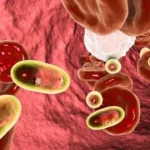In the nanotechnology landscape, nanopore technology is a powerful tool for single-molecule analysis, offering insights into the behavior and characteristics of biomolecules at the nanoscale. Nanopores are nanoscale apertures, typically made from materials such as silicon, graphene, or biological membranes, through which individual molecules can pass. This article delves into nanopore technology’s principles, advancements, and diverse applications, illuminating its role in revolutionizing fields such as genomics, proteomics, and biosensing.
Understanding Nanopores
Nanopores are nanometer-sized apertures that enable the controlled passage of ions or molecules. These apertures can be fabricated using various materials and techniques, each offering unique properties and functionalities. The diameter of nanopores ranges from a few nanometers to a few hundred nanometers, allowing for precise control over the size and selectivity of molecules passing through.
Principles of Nanopore Analysis
Nanopore analysis relies on detecting changes in electrical, optical, or mechanical signals as molecules translocate through the nanopore. In electrical nanopore sensing, for example, the passage of charged molecules alters the ionic current flowing through the nanopore, providing information about the molecules’ size, shape, and charge. Optical and mechanical nanopore sensing techniques utilize similar principles to detect changes in light transmission or nanopore geometry.
Advances in Nanopore Technology
Recent advancements in nanopore technology have led to the development of innovative nanopore platforms and detection methods:
Solid-State Nanopores
Solid-state nanopores fabricated from silicon nitride or graphene offer robustness, scalability, and compatibility with integrated circuitry. These nanopores are suitable for high-throughput single-molecule sensing applications, such as DNA sequencing, protein analysis, and drug screening. Advances in nanopore fabrication techniques, such as electron beam lithography and focused ion beam milling, enable precise control over nanopore dimensions and geometry.
Biological Nanopores
Biological nanopores, derived from naturally occurring proteins such as α-hemolysin or MspA, offer exquisite sensitivity and selectivity for single-molecule analysis. These nanopores can be incorporated into lipid bilayers or synthetic membranes, providing a biomimetic environment for studying biomolecular interactions and dynamics. Biological nanopores are particularly valuable for DNA sequencing, protein folding, and drug discovery applications.
Hybrid Nanopore Systems
Hybrid nanopore systems combine the advantages of solid-state and biological nanopores, offering synergistic capabilities for single-molecule analysis. Researchers can enhance sensing performance, stability, and versatility by integrating biological nanopores with solid-state substrates or nanomaterials. Hybrid nanopore systems are promising for nanomedicine applications, environmental monitoring, and molecular diagnostics.
Applications of Nanopore Technology
Nanopore technology finds diverse applications across various fields, driving innovation and addressing critical challenges:
DNA Sequencing and Genomics
In genomics, nanopore sequencing enables rapid, cost-effective, and portable analysis of DNA molecules. By passing DNA strands through a nanopore and measuring the characteristic electrical signals, researchers can decipher the sequence of nucleotides with single-base resolution. Nanopore sequencing has revolutionized genomics research, offering insights into genetic variations, microbial diversity, and disease diagnostics.
Protein Analysis and Proteomics
Nanopore technology facilitates label-free, real-time analysis of individual proteins, enabling characterization of their structure, function, and interactions. By monitoring the translocation of proteins through nanopores, researchers can study protein folding, unfolding, and binding kinetics at the single-molecule level. Nanopore-based proteomics holds promise for understanding disease mechanisms, drug discovery, and personalized medicine.
Biosensing and Diagnostic Applications
Nanopore sensors offer sensitive and selective detection of biomolecules, pathogens, and toxins for diagnostic and biosensing applications. Functionalized nanopores can specifically recognize target molecules based on size, shape, or chemical properties, enabling rapid and accurate detection of disease biomarkers, environmental pollutants, and food contaminants. Nanopore biosensors hold potential for point-of-care diagnostics, environmental monitoring, and food safety.
Future Directions and Challenges
Despite their significant progress, nanopore technology faces challenges and opportunities for further advancement:
Sensitivity and Selectivity
Improving the sensitivity and selectivity of nanopore sensors is critical for enhancing detection limits and reducing false positives. Research efforts focus on developing novel nanopore materials, surface functionalization strategies, and signal processing algorithms to enhance sensing performance and specificity for target analytes.
Multiplexing and Parallelization
Increasing nanopore platforms’ throughput and multiplexing capacity is essential for high-throughput analysis of complex biological samples. Advances in nanopore array technologies, microfluidic integration, and signal multiplexing enable simultaneous detection of multiple analytes, enhancing throughput and scalability for applications in clinical diagnostics and high-throughput screening.
Integration and Miniaturization
Miniaturizing nanopore devices and integrating them into portable, handheld platforms is crucial for field-deployable applications, such as point-of-care diagnostics and environmental monitoring. Advances in microfabrication, nanofluidics, and wireless communication enable the development of compact, low-cost nanopore devices with real-time data analysis capabilities, paving the way for decentralized and personalized molecular diagnostics.
Conclusion
Nanopore technology represents a powerful paradigm for single-molecule analysis, offering unprecedented insights into the behavior and characteristics of biomolecules at the nanoscale. By harnessing nanotechnology principles, researchers and engineers can develop innovative nanopore platforms and detection methods for various applications in genomics, proteomics, biosensing, and beyond. As research and development in nanopore technology continue to advance, the potential for transformative impact on healthcare, biotechnology, and environmental monitoring is immense, driving the next wave of innovation in molecular analysis and diagnostics.










